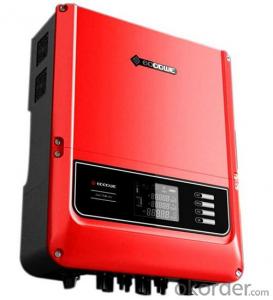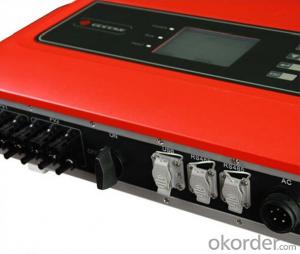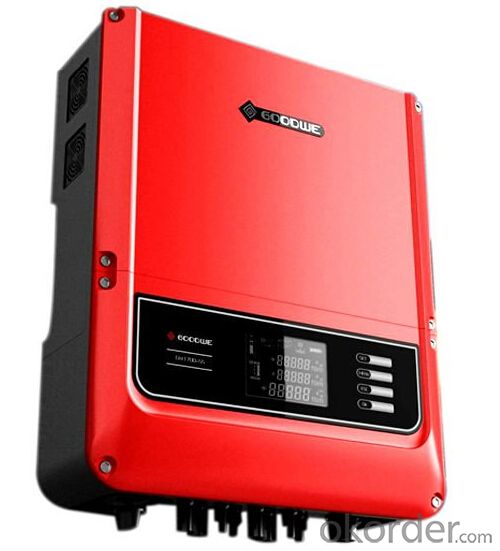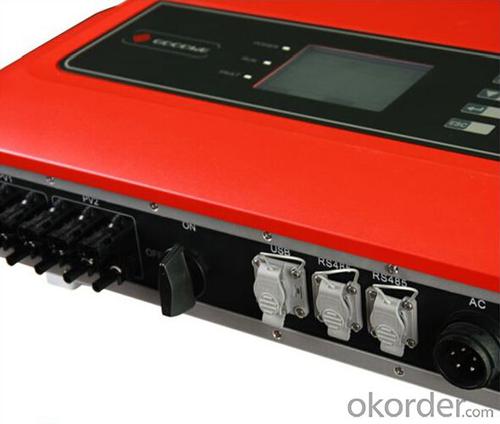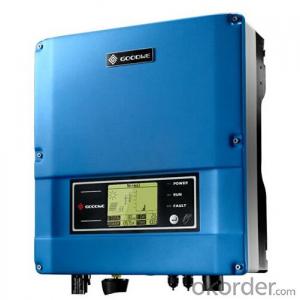UK Solar Inverter Gw15k-Dt On Grid
OKorder Service Pledge
Quality Product, Order Online Tracking, Timely Delivery
OKorder Financial Service
Credit Rating, Credit Services, Credit Purchasing
You Might Also Like
GW15K-DT
GW15K-DT photovoltaic inverter is suitable for commercial and industrial roofs as well as small and medium-sized photovoltaic power systems.
Intelligent heat dissipation design ensures slower temperature rise and more stable running conditions.
The dual-lines MPPT extra-wide voltage range ensures that the system is with more flexible configuration
Datasheet
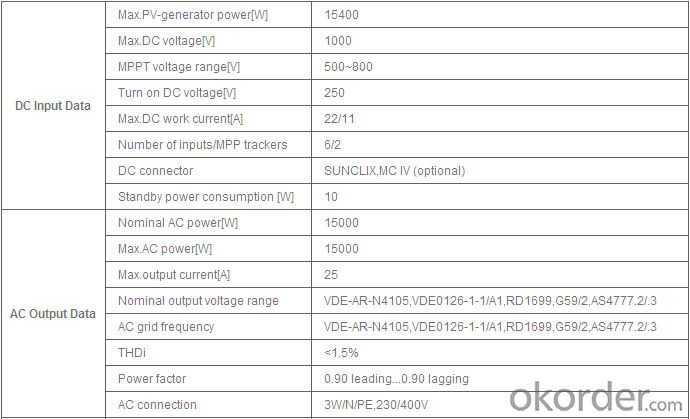
- Q: Can a solar inverter be connected to a battery storage system?
- Yes, a solar inverter can be connected to a battery storage system. This allows excess solar energy generated during the day to be stored in the batteries and used later when there is no sunlight, providing a reliable source of power.
- Q: Can I connect solar panels directly to the grid without an inverter?
- No, you cannot connect solar panels directly to the grid without an inverter. An inverter is necessary to convert the direct current (DC) generated by the solar panels into alternating current (AC) that can be used by the electrical grid.
- Q: Are there any government incentives for installing a solar inverter?
- Yes, there are government incentives for installing a solar inverter. Many countries offer financial incentives such as tax credits, grants, or rebates to encourage the adoption of renewable energy technologies like solar inverters. Additionally, some regions may have specific programs or initiatives that provide additional support or incentives for solar inverter installations. It is advisable to research and consult with local authorities or renewable energy organizations to determine the specific incentives available in your area.
- Q: Can a solar inverter be used in a solar-powered irrigation system?
- Yes, a solar inverter can be used in a solar-powered irrigation system. A solar inverter is responsible for converting the direct current (DC) generated by solar panels into alternating current (AC) that can be used to power various appliances and systems. In the case of a solar-powered irrigation system, the AC power produced by the solar inverter can be used to operate pumps, valves, and other components necessary for irrigation.
- Q: How is the output voltage of a solar inverter regulated?
- The output voltage of a solar inverter is regulated through the use of advanced control mechanisms and power electronics. These components monitor the input voltage from the solar panels and adjust the inverter's internal circuitry accordingly to ensure a stable and consistent output voltage. This regulation process involves techniques such as pulse width modulation (PWM) and maximum power point tracking (MPPT) to optimize the power conversion and maintain the desired voltage level.
- Q: Can a solar inverter be used in a community solar project?
- Yes, a solar inverter can be used in a community solar project. In fact, a solar inverter is an essential component of any solar power system, including community solar projects. It converts the direct current (DC) electricity generated by the solar panels into alternating current (AC) electricity that can be used to power homes and businesses in the community. The solar inverter also helps regulate the flow of electricity and ensures the system operates efficiently.
- Q: How does a solar inverter handle shading or partial obstruction of solar panels?
- A solar inverter is equipped with a technology called Maximum Power Point Tracking (MPPT) which allows it to handle shading or partial obstruction of solar panels. MPPT enables the inverter to constantly monitor the output of each individual solar panel and adjust the system's voltage and current accordingly. By doing so, the inverter ensures that the shaded or partially obstructed panels do not significantly affect the overall performance of the solar array. This way, it optimizes the energy production of the unshaded panels while minimizing the impact of shading on the system's efficiency.
- Q: How do you calculate the total power capacity for a solar inverter?
- To calculate the total power capacity for a solar inverter, you need to consider the maximum power output of the solar panels connected to it. The total power capacity of the inverter should be equal to or greater than the total maximum power output of all the solar panels combined. This ensures that the inverter can handle the maximum power generated by the solar panels and efficiently convert it into usable electricity.
- Q: How much maintenance is required for a solar inverter?
- Solar inverters typically require very little maintenance. They are designed to be reliable and durable, requiring minimal attention throughout their lifespan. Regular visual inspections to check for any debris or dust accumulation, as well as ensuring proper ventilation, are recommended. Additionally, monitoring the inverter's performance through software or online platforms can help identify any potential issues. However, in general, solar inverters are known for their low maintenance requirements, making them a reliable choice for renewable energy systems.
- Q: What is the role of a solar inverter in maintaining system stability?
- The role of a solar inverter in maintaining system stability is to convert the direct current (DC) produced by solar panels into alternating current (AC) that can be used by household appliances and fed back into the electrical grid. By regulating the voltage and frequency of the AC output, the inverter ensures that the solar system operates within the acceptable range, preventing overloading or damaging the connected devices. Additionally, solar inverters also help to synchronize the solar system with the grid, allowing for smooth integration and optimal energy flow. Overall, the solar inverter plays a crucial role in maintaining the stability and efficiency of the solar power system.
Send your message to us
UK Solar Inverter Gw15k-Dt On Grid
OKorder Service Pledge
Quality Product, Order Online Tracking, Timely Delivery
OKorder Financial Service
Credit Rating, Credit Services, Credit Purchasing
Similar products
Hot products
Hot Searches
Related keywords
